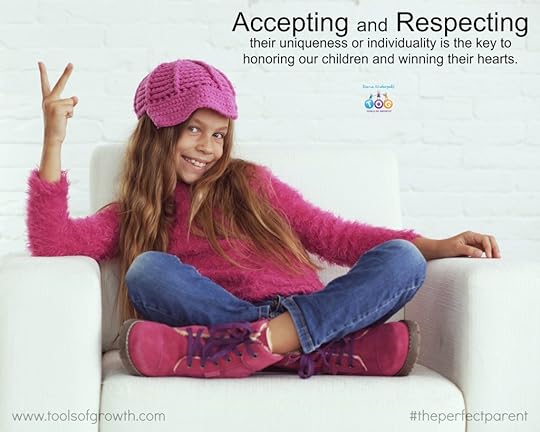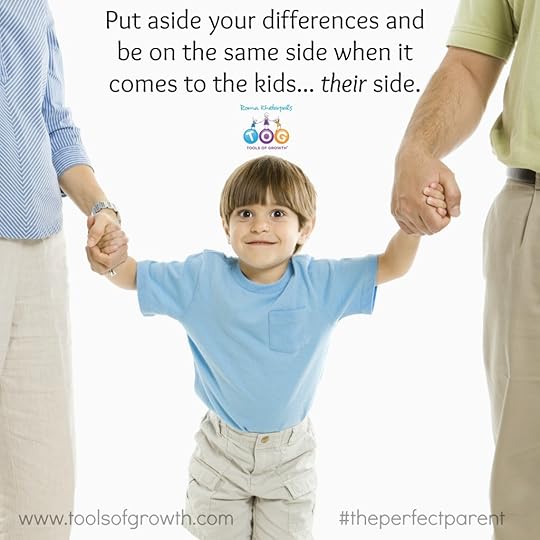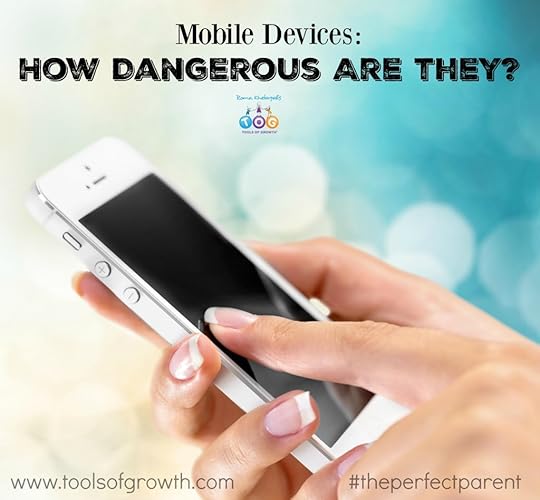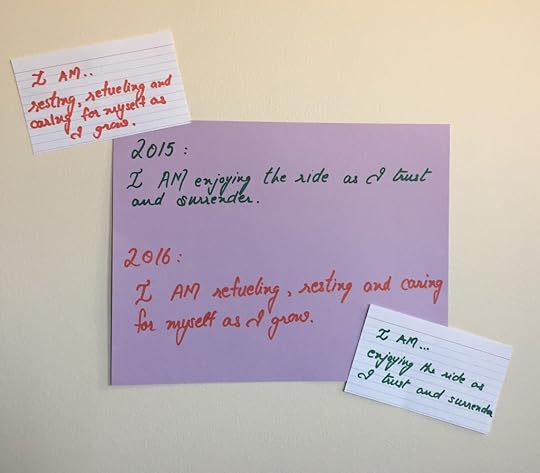Roma Khetarpal's Blog, page 21
March 7, 2016
Taste – The Power of Words
We are constantly teaching our kids the social and emotional skills they need to succeed in their environments – what words to use when they speak to their teachers, friends, and family members. There is no need to work so hard to teach them, however, if we exemplify this ourselves. If our words and tone of voice are respectful and don’t hurt others’ feelings – our children’s, first and foremost – then our children won’t know any other way of speaking.
“That’s scary,” said a mom in a class, sounding concerned. “Am I going to have to learn how to speak ‘properly’? I’m exhausted just thinking about it.”
Here’s what has worked for me and for many other parents: Pick the favorite term of endearment that you use when speaking lovingly to your child – darling, honey, whatever – and use it even when you are angry. My pet words for my kids are love, babloo (“dear” in Hindi), and jaan (“my life” in Hindi). Even when I am angry, I try to remember to use one of those terms right away. It took a while to completely switch from What were you thinking? to What were you thinking, love? But I was amazed to find that it had a profound effect on my tone of voice! The very taste of the word love or dear actually made my tone of voice more loving and compassionate, even though I was angry. The addition of one word and the shift in tone produced a totally different response from my kids: “I’m so sorry. I can’t believe I even did or said that.”
Our words can either drive our kids to close up and be defensive or encourage them to open up and drop their guard. The more we use terms of endearment in place of words of “enfearment,” the kinder we sound and the easier it becomes to communicate with our kids.
Words of endearment tone down the volume of emotions and engage the intellect. Don’t get me wrong; do follow through with the appropriate discipline or grounding. But remember to use words that match the intention of the larger goal: your loving relationship with your kids. If adding that one term of endearment can change the outcome of a single conversation, imagine the powerful changes it can bring over the course of childhood years. When you’re talking to your kids, sprinkle your words with love so they taste good to both you and your child.
The post Taste – The Power of Words appeared first on Tools of Growth.
March 1, 2016
Investing in Mindful and Conscious Parenting
As mindful and conscious parenting plays a greater and greater role in our lives, we can see the effect in everything we do, from how we behave with our kids and what we feed them to family recycling projects. What impact will this new mind-set in parenting have on our children and the future?
In this enlightening video, Roma Khetarpal gives us all an empowering perspective…
Learn more about the parenting educators and renowned authors whom Roma references in this video.
The post Investing in Mindful and Conscious Parenting appeared first on Tools of Growth.
February 22, 2016
Accepting and Respecting
Each child is born into this world with unique gifts – that is, each child has something nobody else has. It could be a whole lot more than others, a whole lot less, or simply a whole lot different. Nevertheless, what our children have is “whole” for them. Deepak Chopra tells us that our “individuality is intimately woven into the fabric of life – that [we are each] a strand in the web of life.” Accepting and respecting this uniqueness or individuality is the key to honoring our children and winning their hearts.
Within the heart of our mind and the mind of our heart, we should accept our children just as they are and respect their individual personalities, honoring them for their ability to complement us and one another. Herman Hesse captured this intention in his story Narcissus and Goldmund:
We are sun and moon, dear friend; we are sea and land. It is not our purpose to become each other; it is to recognize each other, to learn to see the other and honor him for what he is: each the other’s opposite and complement.
If we keep in mind that we have much to learn from our kids and that they are our perfect complement, we honor their individuality. Of course, honoring our children doesn’t mean that we should roll out the red carpet for them. But when we understand and appreciate their role in our lives, we start to move toward acceptance. And when we accept their individuality and their personality, we move toward respect. And respect? Well, that is simply love in action. When we respect our children, we act upon the unconditional love we feel for them.
The post Accepting and Respecting appeared first on Tools of Growth.
February 15, 2016
Teaching Children Financial Intelligence… the Right Way
“You just threw away $150 of my hard-earned money,” says a parent to the 5-year-old who had accidentally dropped an iPad and cracked the screen.
“Money does not grow on trees,” says a working mom to the 10-year-old who had asked if he could get a phone for his birthday.
“I’m sick of you losing your sweatshirts,” says a parent to her 14-year-old. “You’re going to have to pay for them out of your allowance from now on.”
“What! You dropped two classes this semester? That’s it,” scolded a father of a college freshman. “You’re paying for your own classes moving forward. You need to apply for a loan and get a job.”
Why are we so quick to hang a dollar sign on our children’s mishaps? Why are we in such a hurry to tell them how hard it is to earn money? Why do we assume that by connecting their mistakes to money wasted or lost, we are able to teach them a lesson on financial intelligence?
Look at the examples above. You could easily replace the parents’ words with, “You don’t understand the value of money.”
I shudder when I hear parents equate children’s mistakes with not understanding the value of money, perhaps because that carries a personal meaning. Unintentionally, when my loving and nurturing parents said those words to me, they programmed my reactions. As I got older, every time I lost something or broke something, my brain would instantly jump to, “Oh no! I wonder how much that cost?” Or “Ugh, I wasted money again.” I wondered how I could pay them back for their “hard-earned money.”
Planting guilt and fear around the concept of money was hardly my parents’ intention. I know they were trying to teach me to be financially intelligent by putting dollar signs on lost or broken things. But as a child—one who has no earning power and hence no concept of money—my brain was misled by their words. What I developed was a negative impression about money and my relationship with money—one attached to fear.
If every time our children make a mistake, we equate that with the number of dollars lost, we are damaging their relationship with money. By making them feel they have no sense of the value of money, we are planting fear in their minds and pushing them away from financial intelligence. We are scaring them, not educating them.
Think about it, If we keep telling our kids how hard it to ride a bike, they will be afraid to get on and less likely to want to ride one. We actually rob them of the joy of that experience. Similarly, if we use fear-based language around money issues, children will be less confident about money management.
So here’s how we can guide our children toward financial intelligence and build their confidence along the way. Keep in mind that:
Financial losses are golden teaching moments. When the iPad has fallen and cracked or the sweatshirt is lost again, take a deep breath or drink a few sips on water to buy some cooling-down time. We all know that we cannot learn without making mistakes, and dealing with wasting money or misusing it is like any other life lesson. Step into the teaching moment with patience and…
Check the child’s intention. Is this an unintentional accident, an oversight, or an impulsive reaction? Kids (yes, even young adults) often don’t think things through. Once you’ve determined the child’s intention…
Practice Emotional intelligence. Explore and address the feelings behind the behavior. Emotional intelligence propels a child’s academic and life success, and that includes financial success. A quick Dealing with the Feeling can balance emotions and set the pathway for financial intelligence. Now you’re ready to…
Respond and not react. A reaction is emotional and impulsive, while a response is thought out; it comes from the intellect. Keep in mind that if a reaction from the child is answered by a reaction from the parent, emotions are in the lead and resolution far behind. A child’s reaction should be met with a parent’s response in order to communicate effectively and for the lesson to be learned. Now you can…
Resolve with focus. Open up discussions by pointing to the issue (the object) and not the child (the subject). If you child has accidentally dropped the iPad, focus on the larger lesson of “accidents happen” and apologies make us all feel better. And if he or she has thrown the iPad impulsively, explore how it would make them feel if their iPad had been thrown and broken. And if the sweatshirt keeps getting lost, perhaps your son or daughter can concentrate on put it in their backpack as they take it off. If they want a phone, meet them halfway by suggesting that if they can save up half the money with chores around the house, you’d kick in the other half. This will inspire them to keep track of money as it adds up—a financially intelligent move! And if your child has dropped classes, ask why, kindly. Perhaps he or she is having difficulty coping at school or is distracted by social concerns. Reasoning ushers in empathy and compassion.
Most importantly, release any expectations attached to money. In the real world, when we have jobs or hire out services, there are always expectations attached, and subconsciously, we take that mind-set into parenting. But children are still learning about financial intelligence, which is first and foremost about being comfortable with and free of fear about money.
Money does not buy us power or control over children. It is our responsibility to take care of them, and part of that responsibility means spending money on them. We are not doing them a favor. They don’t owe us because we spend money on them. We should do this out of pleasure, instead of burdening our children.
Teach children that money is an energy—just like love. The more we nurture and understand it, the more we will have. The more we give it, the more it will multiply. Once we instill those values around money, we give our kids the power to earn it, enjoy it, and share it. That is the shortest and most empowering road to financial intelligence—one rooted in love, freedom, and learning.
In Joy,
Roma
The post Teaching Children Financial Intelligence… the Right Way appeared first on Tools of Growth.
February 14, 2016
Happy Valentine’s Day
This Valentine’s Day, ask your kids what they think of the word LOVE. Their answers might surprise you.
Wishing you all a day filled with happy memories and lots of love.
The post Happy Valentine’s Day appeared first on Tools of Growth.
February 8, 2016
Sight – A Connection Beyond Words

Our eyes facilitate vision by bringing in light – by enlightening us. Through our eyes we can brighten the darkest of feelings and situations. And even though our eyes are a silent sense organ, they speak volumes. Sad eyes, happy eyes, mad eyes – all are mirrors of our emotions. As Charlotte Brontë wrote in Jane Eyre, “The soul, fortunately, has an interpreter – often an unconscious but still a faithful interpreter – in the eye.”
When children are little, they say a lot through their eyes, and parents can easily pick up on their child’s mood through eye language. When my daughter, Nitasha, was four and she got mad, she would start by squinting her eyes; then she’d tilt her head, fold her arms, and say, “I’m not your friend.” It didn’t take us long to pick up on her cues. The moment she squinted her eyes, my husband would say, “Uh-oh, here it comes. She’s not my friend!” When my son was angry at that age, however, he would sit in a corner, fold his arms, and close his eyes, as if he were trying to hide his feelings.
“Why do you close your eyes when you are mad?” I asked him once.
“Because I don’t want to talk to anybody when I’m mad,” he said.
“If you don’t want to talk, all you have to do is close your mouth, not your eyes, don’t you think?” I asked.
“No,” he answered, “because when you’re sleeping and your eyes are closed, no one talks to you.” Basically, Navin was using his closed eyes as a silent language to tell us, Not now, I’m not ready to talk about it.
An anonymous quote puts it well: “Look into my eyes and hear what I’m not saying, for my eyes speak louder than my words ever will.” If we look carefully, we can easily see what our children’s eyes are saying. Then our own eyes can respond accordingly. Although we exchange feelings most often through words, our eyes offer the strongest and deepest form of nonverbal communications. No surprise, then, that this translates into strong connections with our kids.
The post Sight – A Connection Beyond Words appeared first on Tools of Growth.
February 1, 2016
Parenting When Divorced
There was a post on Yahoo Parenting a few days ago about a long court case involving a divorced father who took away his 12-year-old daughter’s phone as punishment for sending a rude and inappropriate text. The girl’s mother, however, had purchased the phone, and she contacted the police, claiming that the father wouldn’t return her property. The father was arrested, and a two-year legal battle followed (Dad Arrested for Taking Daughter’s Phone as Punishment). After only a 2-day trial, the judge ordered the jury to find the father not guilty. The daughter, now 15, has no relationship with her father. And her relationship with her mother may not be much better.
My heart hurts for the child whose parents are just big children! It alarms me that parents lose sight of the issue at hand and turn a “rude” text into an ego trip that ends up in broken relationships.
The real victim here? A child who is caught between adults with issues—issues that she has nothing to do with. It’s not hard to see why this couple is no longer together. In The “Perfect” Parent, I talk about communication being the basis for our relationship with our kids. The same holds true for our other relationships as well. Our spouse, our own parents, our siblings… how we communicate with them–during challenges as much as during triumphs—will determine what our relationship will be.
When recurring issues go unaddressed, frustrations, doubts, fears, and guilt about parenting set in, snowballing from one issue to another, from one encounter to the next, hurting the parent, the innocent child, and the relationship. With a divorce, there might be bad feelings, but your first priority should always be how the split relationship is affecting your children.
When parents divorce, they don’t become ex-parents, and their kids still need to have both parents involved in their lives. You and your spouse—or your former spouse—owe it to your children to be on the same parenting page. Just as you should discuss items like finances and religion before you get married, it’s critical to discuss how you are going to parent before you divorce. Put aside your differences, and at least be on the same side when it comes to the kids… their side.
The post Parenting When Divorced appeared first on Tools of Growth.
January 25, 2016
The Truth About Our Wireless Devices – Part 2
Last week we shared some information about the possible health effects of mobile phone usage. This week we have more information specifically geared toward children.
How often do your kids use a mobile device?
Most kids today either have their own cell phone or tablet, or at least have access to one through their parents or siblings. It isn’t unusual for children as young as six to use these devices on a regular basis. Yet the technology was originally designed for adults. Do we know what it is actually doing to our kids’ health and well-being?
When these new technologies were developed, several safety studies were conducted to find out what the effects of the EMF/NIR (electro-magnetic frequencies and non-iodizing radiation) had on adults. Guidelines were set in place to keep them protected. Great thing, right?
Yes, but what we couldn’t see back then is that our kids would one day be inundated with the same technology. Today we think nothing of putting a tablet into a toddler’s hands on road trips, in high chairs, and when we need a little peace and quiet. Yet those earlier studies didn’t account for folks smaller than us.
Since then, EMF/NIR research by Gandhi & Kang in 2002 showed that “there is a deeper penetration of absorbed energy for the smaller heads compared to that for the larger heads.” In other words, although the exposure rate was the same for anyone using a mobile device, the absorption rate was quite different. Children, with their smaller heads, were at a much greater risk.
L. Lloyd Morgan, in theJournal of Microscopy and Ultrastructure, also cites studies from around the world indicating children are at greater risk from mobile phone usage.
Some scientists do point out that these studies use simulations of human heads, not actual ones. So the evidence is not completely clear.
Nevertheless, the American Academy of Pediatrics, in a letter supporting The Cell Phone Right to Know Act (H.R. 6358), said:
Children are disproportionately affected by environmental exposures, including cell phone radiation. The differences in bone density and the amount of fluid in a child’s brain compared to an adult’s brain could allow children to absorb greater quantities of RF energy deeper into their brains than adults.
Organizations such as the World Heath Organization (WHO) and the Food and Drug Administration (FDA) are conducting ongoing studies into the dangers of mobile device usage. And in the United Kingdom, the Department of Health has commissioned SCAMP (Study of Cognition, Adolescence and Mobile Phones) for a two-year study of mobile phone effects on children’s brains:
The SCAMP Study will follow several thousand secondary school pupils across London from Year 7 through to Year 9, to investigate whether their use of mobile phones and other wireless technologies might affect their neurocognitive or behavioural development. It is the largest study in the world to address this important research question.
Meanwhile, until we have the results of these studies—which, in some cases, could take years, as mindful parents, we should still be taking steps to keep our kids (and ourselves) as safe as possible.
In the last post we listed some basic mobile device habits you and your kids can follow.
Here are some additional guidelines:
Consider keeping your phone in airplane mode when not in use, since airplane mode means the Wi-Fi signals aren’t constantly trying to connect, causing unnecessary radiation.
Set limits on your kids’ mobile device time. Using a device for homework is fine, but do they need to play games or watch videos for hours on end?
Pregnant women should keep cell phones away from their abdomens.
Do not text and drive, and use specially adapted antennas in cars so phones can avoid absorbing maximum power as the vehicle moves from one cell system to another.
Turn off your wireless router at night to minimize exposure to radiation.
Eat green vegetables and get a good night’s sleep in a dark room to enhance natural repair of DNA that may have been damaged by cell phone use.
Be consistent and follow through. This is a great opportunity to exercise your leadership as a parent and to be a good role model for them. Remember that kids will not always do as you say, but they will definitely do as you do.
Need reminders for all these great new house rules? Here are some fun ones:
Have your kids write their guidelines on a poster board to hang in a common area of your home as a family reminder.
Create a screen-saver image so that every time your kids look at their phones or tablets they are reminded of the guidelines.
Use sticky notes! Put up notes on your bathroom mirror, on your tablet, and in your car to remind kids what to do.
Share with us what new habits your family is adopting.
The post The Truth About Our Wireless Devices – Part 2 appeared first on Tools of Growth.
January 12, 2016
The Truth About Our Wireless Devices – How Dangerous Are They?
Part 1 of a 3-part series.
There are more than 6 billion cell phones and 8 billion wireless transmitting devices in use in the world every day. More than 50 billion are expected to join them in the future. We are constantly adding electronics to our lives, and there is no sign of slowing down. Use of mobile devices is on the rise for everything –from phone calls, shopping, and research to simply playing games and watching TV shows. This relatively new technology is definitely amazing, productive, and life changing, but we need to ask ourselves just how life changing it really is. And are our lives changing for the better… or for the worse?
Think about how many devices your own family uses. Most likely, both parents have cell phones—and possibly tablets as well—and there is a good chance your children are using them, too. Yet it’s safe to say that we, as a population, know little about how mobile devices really work. We know they must connect to satellites to receive Wi-Fi signals and become operational. Other than that, we take it on faith that they are safe. But are they?
I’d like you to try something that I first learned when I sat down to watch Dr. Devra Davis’s lecture at the University of Melbourne in Australia. Dr. Davis was speaking on “The Truth About Mobile Phone and Wireless Radiation.” At the beginning of her talk, she asked iPhone owners in the audience to take them out and navigate to the following:
Settings
General
About
Legal
RF Exposure
Below is the hard-to-find warning that Apple publishes about the phone:
To reduce exposure to RF energy, use a hands-free option, such as the built-in speakerphone, the supplied headphones, or other similar accessories. Carry iPhone at least 5mm away from your body to ensure exposure levels remain at or below the as-tested levels.
How many of us are directed to this information when we buy our iPhones? Probably none! But we need to understand it.
What is RF energy? RF stands for radio frequency. In layman’s terms, it is the ability of your mobile phone (and tablets) to connect to Wi-Fi. Those radio frequencies are similar to what our microwaves use. We hear about the dangers of microwaves all the time, but very few of us are alerted to the dangers of our mobile devices. You certainly wouldn’t want to have your in-use microwave on your lap or held to your ear for hours a day, but we have no problem doing the same with our phones and tablets. And we give tablets to our kids to keep them busy or to learn new tasks. Tablets should be used on a table, but they’re being held in our children’s laps, close to their bodies, for hours at a time.
The radio frequencies we’re discussing are electromagnetic fields (EMFs), basically radiation. And while the World Health Organization (WHO) believes that short-term exposure is relatively safe, it does say that the International Agency for Research on Cancer has classified EMFs produced by mobile phones as “possibly carcinogenic to humans”. WHO is conducting a formal risk assessment with results expected sometime in 2016, but for now the jury is still out on the effects of long-term mobile phone use.
The FDA, on its website, cites several ongoing studies into the link between mobile device usage and health effects. Unfortunately, long-term studies might take 20 to 30 years to complete.
Going back to that legal notice on your iPhone, you’ll notice they recommend that you not hold the phone up to your ear and that you keep it away from your body. How many of us actually do that? Instead, when we hear our phone ring, most of us immediately put it to our ear and talk for minutes or hours at a time. How many of us then put that phone in our back pockets and continue to carry it around throughout the day? As Dr. Davis notes, that’s not exactly the best behavior to model for our children.
So what can we do? Here are some suggestions:
Above all, hold phones away from your body.
Keep the phone away from your ear when you answer it. Use the speaker option. As Dr. Davis points out, EMF exposure is highest when we answer a ringing phone and when cell phones connect to each other.
Be sure to have your cell phone turned off before you put it in your pocket.
If you are expecting a call and are in the car, keep the phone in your cup holder.
If you are at home, place it on your counter… if at work, put it on your table. If you are walking in a grocery store or other shop, keep the phone in your purse.
Men (or those who don’t carry purses) should invest in an EMF-reducing cell phone case. Many different models are available on Amazon. Take the time to do some research and find the one that works best for you.
Use tablets on a table, rather than in your laps.
It might take a few years before the scientific verdict is officially in. In the meantime, it is our responsibility as parents to pay attention to the ongoing controversy and to be good role models for our children.
Next week, Part 2 of The Truth About Our Wireless Devices.
The post The Truth About Our Wireless Devices – How Dangerous Are They? appeared first on Tools of Growth.
December 30, 2015
A New Year’s Affirmation
With the New Year’s arrival, I cannot help but anticipate with excitement the unfolding of 2016. One of the biggest gifts of personal growth I received in 2015 was observing the magic that happens when you “trust and surrender.”
Honestly, I have never, ever made a New Year’s resolution. That’s just not my thing. Believe me, I’ve tried. At the end of 2014, from the day after Christmas through the entire month of January, I read more than 100 pieces on setting New Year’s resolutions and another 100 on other people’s resolutions, promises, goals, intentions, visions…you name it! “Did I want my resolution for my first year as an author to be personal? For family? For business? I mulled questions like those well into February.
And then inspiration arrived: I received an email from a parent who had read my book, The “Perfect” Parent. She said that “her second favorite thing about the book was the easy-to-reference Toolbox at the end.” But her absolute favorite things were the affirmation reminders that empowered her during parenting challenges and weak moments.
I’m a die-hard advocate of simplicity, and the idea of a pressure-relieving, self-soothing New Year’s affirmation really resonated with me! In seconds my affirmation popped into my head: “I am enjoying the ride as I trust and surrender.”
Aligning with my TOG mission to Raise Kids to Be Happy, Think Positive, and Do Good, in this year of all things new, I have worked a full two months of 18-hour days, creating a new grass-roots program for campus supervisors (also called yard duties) in the Saugus Union School District; taught workshops on Mindful Teaching; spoken to several hundred parents at book talks and signings; moderated the first-of-its- kind Conscious Parenting summit with one of my mentors, Dr. Shefali Tsabary; and shared the stage with Neale Donald Walsch, whose teaching my family and I have followed for more than a decade. And that’s just my Top Five..
Yes, I was challenged to raise the bar over and over again, and, yes, I turned to my 2015 affirmation often. When I wasn’t actually enjoying the ride, reminding myself to “trust and surrender” eventually got things back on track.
As I reflect on all the unexpected, yet welcome, surprises that I have had this year, my heart is overjoyed and humbled by my response to the ups and downs. Isn’t that what life is all about—how we carry ourselves through whatever shows up?
I’m going at it again this year. Inspired by my friend and transformation coach Suzi Lula my 2016 affirmation is: “I am resting, refueling, and caring for myself as I grow.”
Mind you, I am not replacing my 2015 affirmation, simply adding onto it. Now that “trust and surrender” has become a habit, I will keep that and grow from here!
If I have inspired you to write a New Year’s affirmation, please share it, a picture, and your progress with us. On New Year’s Day, I will be making this a family activity. I invite you to join and do the same.
Some pointers:
Start your affirmation with “I AM…” Write it in the present (as if it is happening now). That is an immediate reminder to make it happen now.
Write it on a large sticky note, and paste it on a wall where you can look at it often.
Write it on an index card and place it on your nightstand. I like to read mine before I go to be bed and when I wake up in the morning. A good friend has it taped to her bathroom mirror so she can be reminded of it while brushing her teeth.
Keeping a simple affirmation close by and repeating it routinely is both self-empowering and soothing. As Mohammed Ali said, “It’s the repetition of affirmations that leads to belief. And once that belief becomes a deep conviction, things begin to happen.”
Wishing all TOG parents a year of plentiful happenings and pauses to rest, refuel, and care for yourself along with your children.
Happy 2016 to you and your families!
In Joy!
The post A New Year’s Affirmation appeared first on Tools of Growth.












